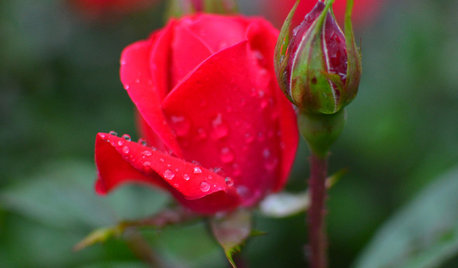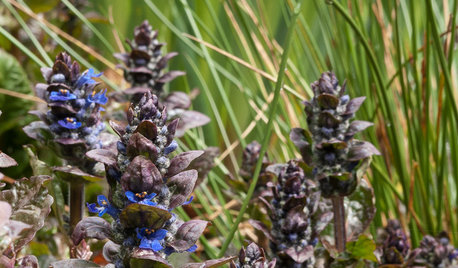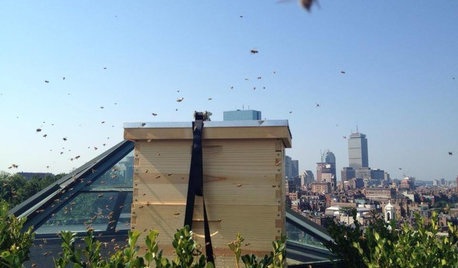Resistance to rose rosette virus
ioannis_tzanetakis
8 years ago
last modified: 8 years ago
Featured Answer
Comments (55)
ioannis_tzanetakis
8 years agonikthegreek
8 years agolast modified: 8 years agoRelated Discussions
Houston Rose Society Rose Rosette Virus info
Comments (1)Thanks Henry - you always come up with interesting articles. Jackie...See Morerose rosette virus - one-third to half of all knockout roses in M
Comments (13)The follwing was stated by jokewing: "jJust wondering why henry kuska ONLY makes posts having to do with diseases and death? Has anyone else noticed this? Why is he even worried about roses if the thinks they are so disease ridden? " H.Kuska comment: Jockewing, perhaps your own post is a good explanation as to why I feel knowledge about what is known/unknown about rose diseases is important. "Posted by jockewing 9a (My Page) on Thu, Jul 4, 13 at 16:18 Yes Thornton, I hope you are right. With the amazing science we have today, I'm surprised more roses with such qualities have not been released. It just baffles me that the most beautiful flower we are able to grow is plagued with so many problems. Why must that be? There are so many beautiful plants that are such a breeze, but in my opinion nothing is so special as a classic hybrid tea rose. Why must they be plagued with so many diseases and pests? I admire the Knockouts, but I just don't think they are beautiful except perhaps in mass plantings from a distance, say at a commercial building or along the highway. We want giant flowered hybrid teas with the same vigor!!! It really makes me sad that virtually NO ONE I know in my area grows any classic hybrid teas at all, with may the exception of a few here or there, usually in an older neighborhood." http://forums2.gardenweb.com/forums/load/roses/msg0715030426702.html ----------------------------------------------- Additional H.Kuska comment: If you are interested in my other contributions to rose growing why not do a Google search with the search terms: "Henry Kuska" and roses or you could get a partial view at the following thread: http://forums2.gardenweb.com/forums/load/roses/msg0411322117173.html Here is a link that might be useful: link to earlier thread This post was edited by henry_kuska on Sun, Oct 20, 13 at 16:33...See MoreFirst Report of Rose Rosette Disease caused by Rose rosette virus on K
Comments (4)Ann, the virus has been found in Bossier City (just about on I-20). http://bestofswla.com/2015/12/03/witchs-broom/ "Bossier shares most aspects of its climate with its sister city of Shreveport. The city has a humid subtropical climate (Köppen climate classification Cfa) with hot, humid summers and mild winters. During the warmer months, the city is prone to severe thunderstorms which feature heavy rain, high winds, hail, and occasional tornadoes. The city has a slightly above average rate of tornadoes when compared to the US average.[15] Due to the flat topography of the city and the prominence of smaller waterways that are prone to backwater flooding from the Red River, the city occasionally experiences severe flooding events. A notable occurrence of severe flooding occurred in March 2016 after torrential rains caused a rapid rise of many local waterways, displacing upwards of 3500 people from their homes across the area.[16][17] Freezing and ice storms occasionally occur during the winter months." https://en.wikipedia.org/wiki/Bossier_City,_Louisiana...See MorePreprint- resistance to rose rosette and transmission attributes
Comments (19)Hi, Patty, Your apology to Henry means a lot to me. These studies are in their infantile, alpha (if the cycle of information metabolism goes from alpha to delta), and so there is still a lot to understand, see, and think about. The value of the information involved surpasses any idea of monetary gain. It can be used for decades to come. If I had to guess, I would assume that the plants were donated by those already on a committee. Also, access to Star and Weeks roses is the easiest in the US right now. Weeks doesn't have a lot to gain by volunteering Stormy Weather. Mostly recognition by name. At that point, its little different than donating roses to a well-known park. Its simple marketing. It isn't their intellectual property like, for example, Home Run is. For example, you will often see a unique rose offered by a wholesaler by a newcomer, and then a few years later they have their own version of it and the unique rose isn't at the forefront of sales any longer (an immediate example would be Honey Dijon:Pumpkin Patch. From their view, why pay royalties when product replacement can found in-house. That's a pretty typical business practice in marketing new things. The same could be said for the old AARS program. It was essentially a marketing tool and for name-dropping companies. Nothing new under the sun. re: herbicide damage. They two things do appear alike, because they both cause witch's brooming. A common malady in many types of plants. Some conifer types have even been cloned from the effect. So while the exterior phenomenon is nearly identical, the internal going-on is a lot different. I think if more roses were volunteered, and more money was volunteered, then more roses with resistances could be found. Again, this is still in its alpha stage. It would be wonderful if people could see this thread that are infected areas, differentiate if the malady in their garden was 100% RRD, and offer any information about which roses were unaffected. Thanks, Mike...See Morehenry_kuska
8 years agoioannis_tzanetakis
8 years agolast modified: 8 years agonikthegreek
8 years agolast modified: 8 years agohenry_kuska
8 years agostillanntn6b
8 years agonikthegreek
8 years agostillanntn6b
8 years agohenry_kuska
8 years agolast modified: 8 years agoioannis_tzanetakis
8 years agoRosefolly
8 years agohenry_kuska
8 years agoioannis_tzanetakis
8 years agohenry_kuska
8 years agohenry_kuska
8 years agoioannis_tzanetakis
8 years agohenry_kuska
8 years agoioannis_tzanetakis
8 years agohenry_kuska
8 years agoioannis_tzanetakis
8 years agolast modified: 8 years agoTessiess, SoCal Inland, 9b, 1272' elev
8 years agoioannis_tzanetakis
8 years agolast modified: 8 years agohenry_kuska
8 years agoioannis_tzanetakis
8 years agolast modified: 8 years agohenry_kuska
8 years agolast modified: 8 years agohenry_kuska
8 years agoioannis_tzanetakis
8 years agoTessiess, SoCal Inland, 9b, 1272' elev
8 years agoioannis_tzanetakis
8 years agoTessiess, SoCal Inland, 9b, 1272' elev
8 years agonikthegreek
8 years agoioannis_tzanetakis
8 years agohenry_kuska
8 years agoerasmus_gw
8 years agoioannis_tzanetakis
8 years agoerasmus_gw
8 years agonikthegreek
8 years agoerasmus_gw
8 years agoioannis_tzanetakis
8 years agolast modified: 8 years agohenry_kuska
8 years agolast modified: 8 years agohenry_kuska
8 years agolast modified: 8 years agonikthegreek
8 years agolast modified: 8 years agoerasmus_gw
8 years agoioannis_tzanetakis
8 years agohenry_kuska
8 years agolast modified: 8 years agohenry_kuska
7 years agohenry_kuska
6 years agohenry_kuska
5 years ago
Related Stories

GARDENING GUIDESWhat Kind of Roses Should You Grow?
Want to add the beauty of roses to your garden? Find out which ones, from old-fashioned to modern, are right for you
Full Story
GARDENING GUIDESGreat Design Plant: Knock Out Roses
As glorious as their high-maintenance kin for a fraction of the work, Knock Out roses make even beginners look like garden stars
Full Story
GARDENING GUIDES5 Sweet to Spirited Pink Roses for an Enchanting Garden
Whether you go demure or daring, there's a pink rose here to make you flush with garden pride
Full Story
WINTER GARDENINGPruning Secrets for Exquisite Roses
Encourage gorgeous blooms year after year with this time-tested advice on how to prune your rosebush in winter for health and shape
Full Story
GARDENING GUIDESGreat Design Plant: Bugle Weed, a Quick Ground Cover
It’s highly adaptable, suppresses weeds, reduces erosion and provide weeks of bright flowers. Just watch for invasiveness
Full Story
HOUZZ TV FAVORITESHouzz TV: See How Early Settlers Lived in This Restored Pilgrim House
Passionate restoration and preservation efforts give a 1665 home an honored place in the present
Full Story
LIFEHow to Outsmart Backyard Critters
Learn to think like a raccoon, skunk or squirrel to keep your home safe and your garden intact
Full Story
MOST POPULAR8 Backyard Ideas to Delight Your Dog
Cue the joyous soundtrack. These pet-friendly landscape and garden ideas will keep your pooch safe, happy and well exercised outdoors
Full Story
KITCHEN DESIGN9 Creative Looks for Kitchen Cabinets
When plain cabinet finishes just won’t cut it, consider these elegant to inventive approaches
Full Story
FARM YOUR YARDHello, Honey: Beekeeping Anywhere for Fun, Food and Good Deeds
We need pollinators, and they increasingly need us too. Here, why and how to be a bee friend
Full Story



nikthegreek